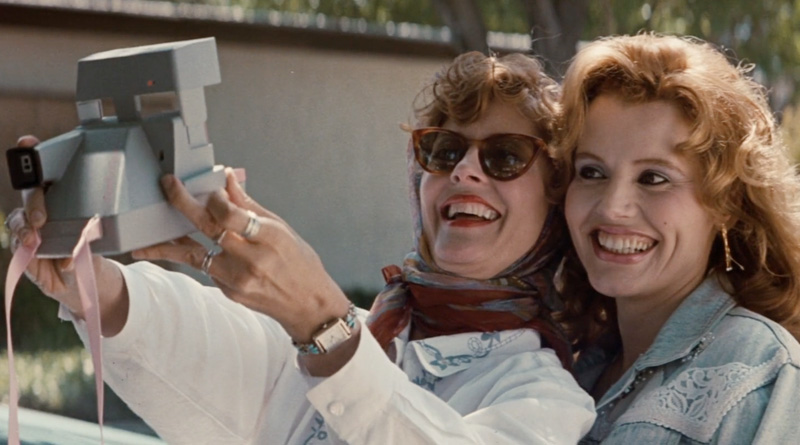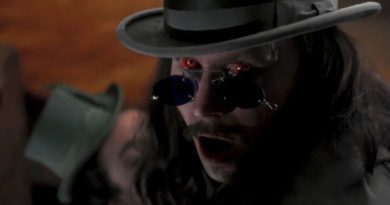Thelma & Louise at 30: A Great, Female-Led Road Movie
(Disclaimer: This feature article contains spoilers)
Thelma & Louise, which recently celebrated its 30th anniversary, is one of Ridley Scott’s best films ever made other than his highly-praised sci-fi classics including Alien (1979) and Blade Runner (1982). Not to mention the film was ahead of its time, particularly for its strong depiction of female empowerment.
Added to the fact that Thelma & Louise was released in male-dominated Hollywood where words like “feminism” and “gender equality” were barely emphasised or discussed back then, unlike what we witness in today’s Hollywood films. The film even came out during the summer movie season of May 24, 1991 — the Memorial Day weekend where two high-profile Hollywood blockbusters including Backdraft and Hudson Hawk happened to debut on the same day.
Although Thelma & Louise made its debut in No. 4 at US$6.1 million, it did unexpectedly good business in the US with a total box-office gross of US$45.4 million against a US$16.5 million budget. The film also earned 5 Academy Award nominations, notably Best Director for Ridley Scott (lost to Jonathan Demme for The Silence of the Lambs) and a pair of Best Actress for both Geena Davis and Susan Sarandon (lost to Jodie Foster for The Silence of the Lambs).
It did, however, won Callie Khouri for Best Original Screenplay, where she beat out other nominees like John Singleton (Boyz n the Hood) and Richard LaGravenese (The Fisher King). Khouri would later write the screenplay for the Julia Roberts-and-Dennis Quaid dramedy Something to Talk About (1995) and made her directorial debut in 2002’s Divine Secrets of the Ya-Ya Sisterhood, an ensemble comedy-drama starring Sandra Bullock and Ellen Burstyn.

Mixing buddy film with a road-movie genre, Thelma & Louise features Geena Davis and Susan Sarandon in their respective roles as two best friends, who supposed to have a fun time together on a cross-country road trip. However, things didn’t go exactly as planned after the drunken Thelma was almost raped by a stranger in the bar (Timothy Carhart, you might remember him playing the slimy antagonist in Beverly Hills Cop III). After Louise became enraged over the stranger’s certain remark, she ends up shooting him to death with a revolver.
Instead of going to the police, they decided to flee the scene with Louise thinking of laying low in Mexico. The police subsequently find out about the death of the stranger, with Detective Hal Slocumb (Harvey Keitel) in charge of the investigation to locate Thelma and Louise’s whereabouts.
Towards the end of the film, Thelma and Louise eventually find themselves boxed in by the police. With nowhere else to escape and none of them wanted to go to the prison, they decided to drive their green 1966 Thunderbird convertible over the cliff. The scene where the Thunderbird convertible torpedoed into the mid-air and gradually fade to white is undoubtedly the film’s most iconic moment. It was a poignant finale that instantly reminded me of 1969’s Butch Cassidy and the Sundance Kid, where the film ended with the memorable freeze-frame of the two outlaws (Paul Newman and Robert Redford) charging out of the building, all guns blazing. Instead of fading to white, the film’s freeze-frame image faded to a sepia-coloured tone.

But despite the now-legendary fade-to-white ending, Scott initially concluded the scene with the pair still driving off the cliff and continues with the Thunderbird convertible plummeting into the canyon below. The original ending also sees Detective Hal Slocumb running towards the edge of the cliff and looks down for a while before turning away. Right before the end credits roll, there was a final shot of the pair driving off into the sunset, symbolising Thelma’s “let’s keep going” dialogue.
There was another ending too, even though it was more of an abandoned idea: A scene where Louise chose to push Thelma out of the convertible right before it flies off the cliff, leaving the latter survives in the end. Of course, that didn’t happen after Susan Sarandon reportedly fought hard to have the other ending that we know to remain intact.
Given the road-movie genre that dominated throughout the film, Thelma & Louise also successfully explored the common theme of self-discovery. This can be evidently seen in Thelma’s gradual transformation from a meek, stay-at-home housewife who has to put up with her controlling husband (a perfectly-typecast Christopher McDonald as Darryl) to a devil-may-care woman who’s got nothing to lose.
Sarandon’s Louise, on the other hand, is more of a jaded and level-headed woman. This is where it gets interesting, especially the way her seemingly take-charge character from the beginning, who gradually give ways for Thelma to become the “leader”. I remember when I first watched Thelma & Louise, I didn’t expect the two of them would switch roles. It happens after Louise discovers all her life savings were stolen by a young and charming thief named J.D. (Brad Pitt). From there, she started to lose her direction, making Thelma a protagonist for the rest of the film.

Speaking of Brad Pitt, Thelma & Louise was notable for his breakthrough performance as the charismatic J.D. But in an alternate reality, William Baldwin would have played the J.D. role instead and yet, he chose to drop out to take a role in Backdraft. And here’s the ironic part: Pitt happened to audition Baldwin’s part for Backdraft but failed to secure the role. Although Pitt’s appearance in Thelma & Louise was a small role, he manages to make quite an impression, notably during his shirtless scene where he shows off his well-sculpted body while holding a hairdryer like a cowboy.
Let’s not forget about Adrian Biddle’s gorgeously shot, Oscar-nominated daytime and nighttime cinematography, coupled with Scott’s keen eye for mesmerising visuals throughout the film. No doubt Thelma & Louise is visually stunning that made good use of the desolate landscapes shot mostly in Utah.
Following the success of Thelma & Louise, Scott went on to direct the ill-fated 1492: Conquest of Paradise in 1992 and two more films during that decade including White Squall (1996) and G.I. Jane (1997). Then came the millennium, where Scott famously revived the long-forgotten sword-and-sandal genre in the Oscar-winning Gladiator.




